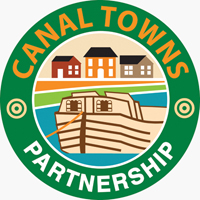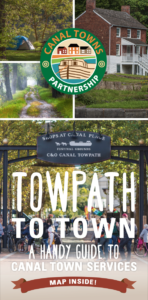What is a Canal Town?
Canal towns are communities along the C&O Canal that:
- Offer services to trail users, including lodging, restaurants, shopping and equipment repair,
- Enrich the C&O Canal experience with their history, hospitality, and small-town charm,
- Provide valuable support to the National Park Service in its stewardship of this important historical and recreational resource.
Beginning in 1828, the C&O Canal brought industry and growth to communities along its route. The canal had a profound impact on the towns’ early culture and architecture that resonates even today. Historical challenges around the Canal also left their mark, through labor conflict, disease, Civil War, and floods. When those floods combined with newer transportation systems to shut down the Canal in the 1920s, Canal Towns suffered decline.
Now with this old transportation system transformed into a National Park and popular trail, Canal Towns are once again thriving and extending a welcome to tourists and trail users alike. Read more about the history of the C&O and its towns in our Towpath to History brochure.
What is the Canal Towns Partnership?

In 2011, several Canal Towns formed a new alliance to generate mutually beneficial economic activity in the towns. Each town sends representatives to monthly meetings to share information, offer advice and support to the National Park Service, and develop intertown projects.
Throughout the years, we have:
- Arranged for a free van shuttle service around a temporary towpath washout
- Established informational kiosks with guides to services at entrances to each town
- Published and distributed thousands of informational brochures to aid in planning trips along the C&O towpath
- Lobbied for improvements and repairs along the trail and its access points.
The Canal Town Partnership meets in rotating towns from 10 am-12 pm, on second Wednesdays from September through May. For more information or to get involved, sign up for our email newsletter or follow us on Facebook and Instagram.
Visit a Canal Town
View the Trail to History Brochures:
- C&O Canal Trail to History: Poolesville, Point of Rocks, Brunswick, Harpers Ferry
- C&O Canal Trail to History: Shepherdstown, Sharpsburg, Williamsport
- C&O Canal Trail to History: Hancock, Paw Paw, Oldtown, Cumberland








